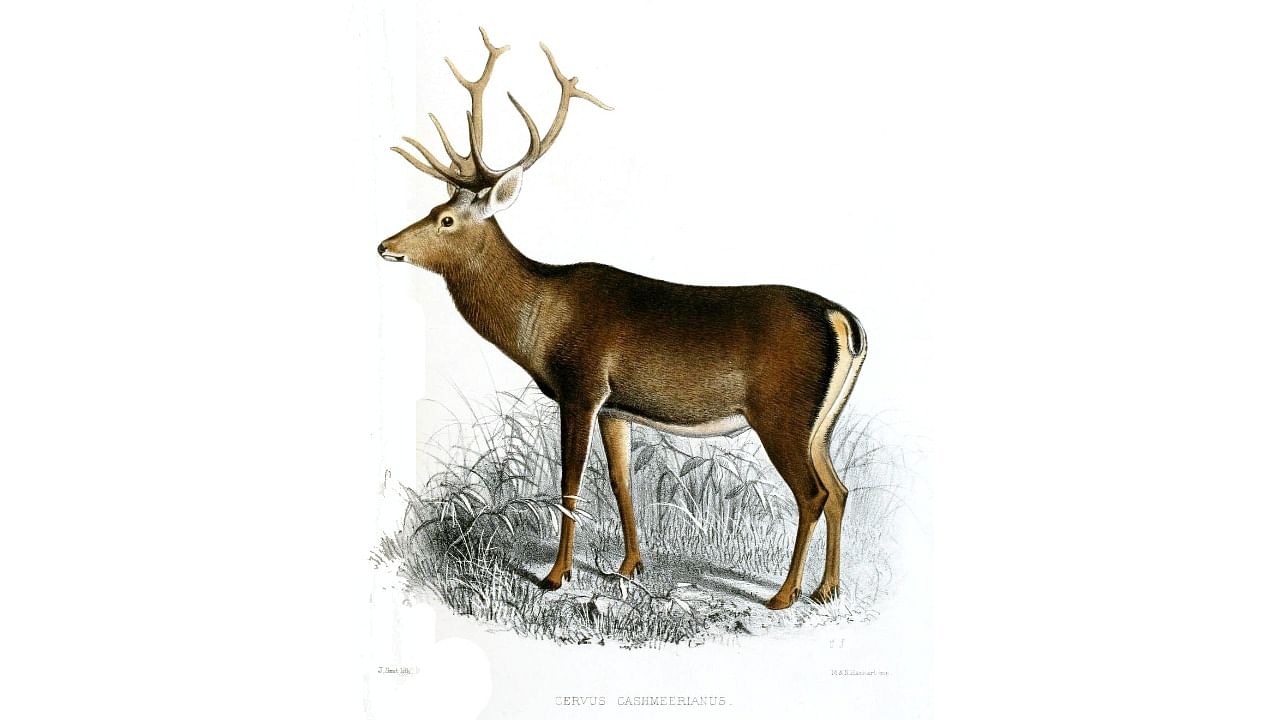
The population of the Kashmir stag, locally known as the hangul, has shown a gradual increase with the latest census showing the estimated number of the critically endangered species rising to 263 in 2021 from a low of 127 in 2008.
The biennial census of hangul counting using scientific methods by the Jammu and Kashmir Wildlife department was started in 2004. It estimated that in 2004, the hangul population was 197, 153 in 2006, 127 in 2008, 175 in 2009, 218 in 2011, 186 in 2015, 214 in 2017 and 237 in 2019 and 263 last year.
The latest census also shows the number of hangul males per 100 females was 126, down from 153 in 2019. The number of fawns per 100 females has increased to 13.4 in 2021 from 9 in 2019. The ratios ideally should have been 40-50 males/100 females and above 60 fawns/100 females.
The hangul was widely found in the hilly and mountainous regions of Kashmir in the early 20th century with their numbers estimated to be around 5,000. However, due to hunting and encroachment of their natural habitat, the number fell to just around 150 in 1970.
The International Union for Conservation of Nature’s (IUCN) Red Data Book which contains lists of species at risk of extinction declared the Hangul as one of three species that were critically endangered in Kashmir. The other two are the markhor and the Tibetan antelope or ‘chiru’.
In the 1970s, the government of Jammu and Kashmir along with the support of IUCN and World Wildlife Fund (WWF) prepared a project for the protection of the habitat of the hangul.
Dachigam National Park is said to be the last abode of the hangul which is known for its magnificent antlers with 11 to 16 points, and is the only surviving race of the Red Deer family of Europe in the subcontinent.
Aaltaf Hussain Dentoo, Wildlife Warden, Central division said there has been a gradual increase in the population of the Hangul in recent years and there are no worrisome factors.
“As Hangul is endangered but like other animals they get their food naturally. In winters, during snowfall, we drop some vegetables, fresh leaves and other things for them,” he said.